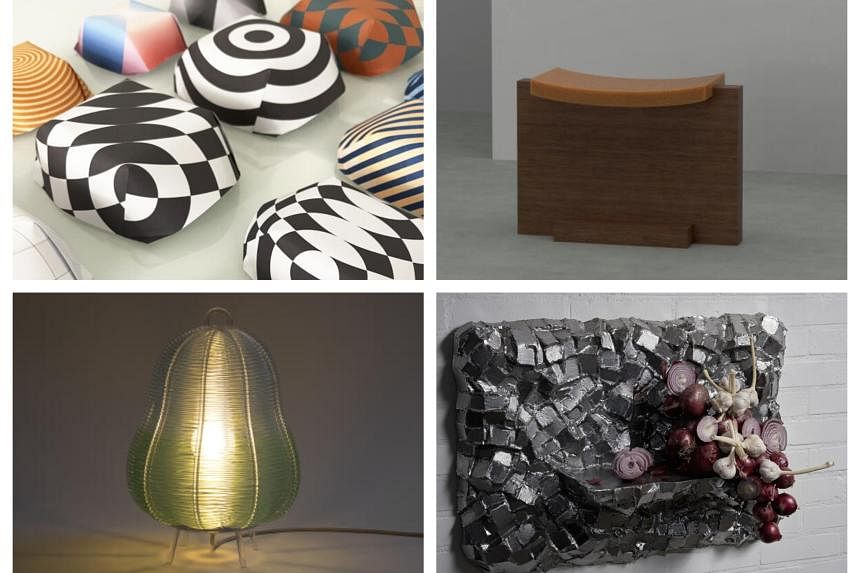SINGAPORE – Local designers are getting experimental and staking out new turf at Milan Design Week during the Salone del Mobile.Milano – the world’s biggest design event – from April 16 to 21.
From furniture coated with a specially treated fabric that absorbs carbon dioxide to a Mosaic Membrane experiment that presents mosaic tiles in skin-like, three-dimensional forms that can be used as furniture, the 2024 contingent is pulling out all the stops to showcase Singapore as a hub of innovation and creativity.
Seven designers, including five first-time participants, will be featured at Future Impact 2, organised by the DesignSingapore Council (DSG).
DSG, a subsidiary of the Economic Development Board and Singapore’s national agency for design, is staging its second standalone exhibition of Singapore designs at the La Rotonda del Pellegrini. It is a Renaissance-era building in the heart of Milan, outside the 62nd Salone del Mobile.Milano, which is at the Rho Fiera fairgrounds.
First-time participants at Future Impact 2 are designer duo Christian Hammer Juhl and Jade Chan; collaborators Genevieve Ang and Clement Zheng; and designers David Lee, Faezah Shaharuddin and Zavier Wong.
And it will be the second show for Mr Gabriel Tan and Ms Tiffany Loy after a successful first run at 2023’s Future Impact, which was held at the Casa del Pane, Bastioni di Porta Venezia in Milan.
The 62nd edition of the week-long trade fair will see more than 1,900 global exhibitors at the fairgrounds just outside Milan’s city centre, taking up about 210,000 sq m.
Every year, about 370,000 attendees from 188 countries use the global platform to introduce thousands of innovative products.
One of the highlights of Milan Design Week is an installation by acclaimed American film-maker David Lynch, known for movies such as Dune (1984) and Mulholland Drive (2001).
His surreal Interiors By David Lynch. A Thinking Room reflects on the design of interior spaces and their relationship with an individual’s journey.
Milan Design Week is part of a cluster of events that includes the Salone del Mobile.Milano furniture fair and SaloneSatellite, a component of the Salone del Mobile.Milano showcasing young talent. There is also Fuorisalone, which refers to events outside the fair hosted in hundreds of venues across the Italian city, such as Future Impact 2.
Mr Tony Chambers, a global design thought leader, and Ms Maria Cristina Didero, a Milan-based author and design curator, helped DSG put together the inaugural iteration of Future Impact in 2023. They returned as curators in 2024 and worked with designers to present positive and impactful design solutions for a better future.
The designers have either integrated different technology or pushed the boundaries of production to develop works that minimise environmental impact and question current production methods.
Ms Dawn Lim, DSG’s executive director, says that after DSG’s successful showcase at Future Impact in 2023, the team is excited to be back at Milan Design Week.
“The second edition expands on the same theme with more designers and fresh works, showcasing Singapore’s distinctive vision and approach to design on the global stage. In addition, we will be organising a suite of free programmes and workshops to reach out to more visitors here in Milan,” she adds.
“The council continues to identify relevant industry platforms as part of our ongoing efforts to engage global audiences and raise the profile of Singapore Design internationally.”
The Straits Times talks to the designers about their world-class creations.
Good Gourd – Hybrid Basketry Lamps by Gabriel Tan
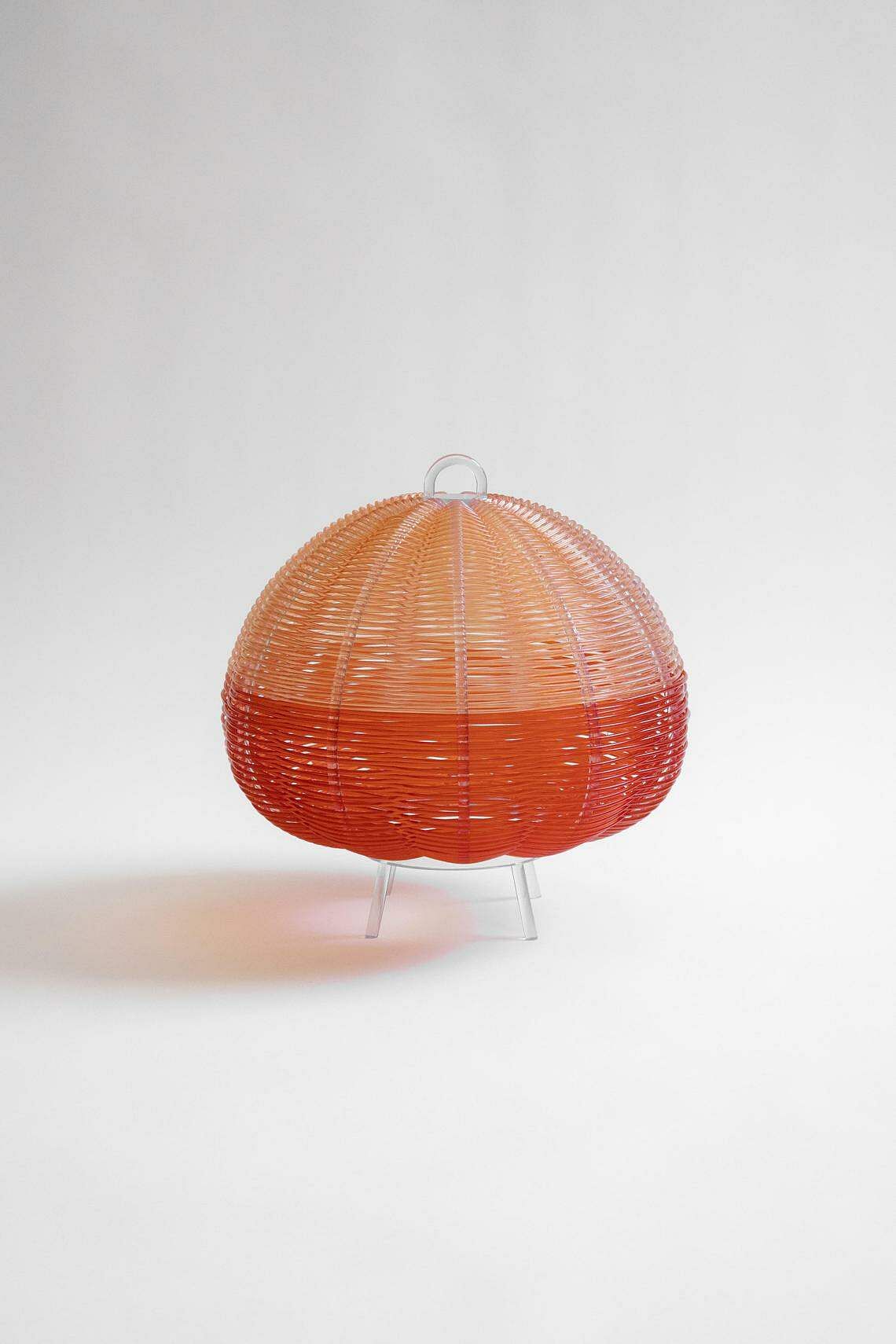
Singapore designer Gabriel Tan’s Milan project shows how technology can be combined with traditional crafts to create new aesthetic forms.
This is the second time Mr Tan, 41, founder of Gabriel Tan Studio, is participating in Future Impact. He has design studios in Singapore and Porto in Portugal, where he resides with his family.
In 2023, he exhibited a floor and pendant lamp inspired by the Flower Power movement of the 1960s and 1970s.
This time, he will be unveiling Good Gourd – Hybrid Basketry Lamps, a pair of colourful table lamps handwoven around 3D-printed resin structures using traditional basket-weaving techniques.
He was inspired by renowned Spanish artisan Idoia Cuesta, whose basketry work involves using fishing lines from her native Galicia, in north-western Spain, to weave vessels and sculptures.
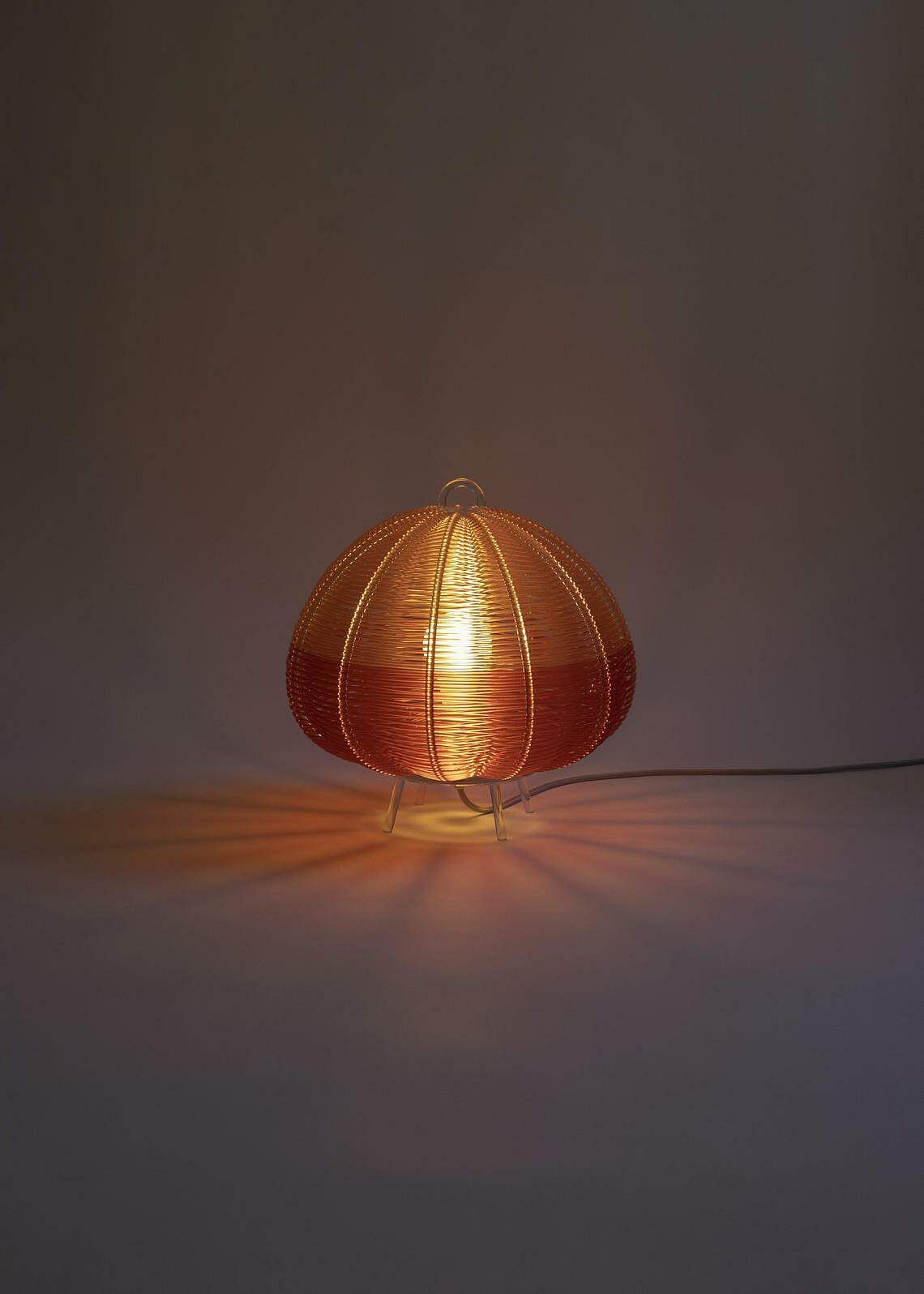
“We collaborated with her in the weaving of these lamps,” says Mr Tan. “The forms of the lamps are inspired by the strange but beautiful shapes of gourds and squashes, while their structures pay homage to the Akari lanterns by Isamu Noguchi.”
The late American sculptor Noguchi created Akari lamps in the 1950s with an ancient Japanese technique using mulberry bark paper and bamboo.
The debate between handcrafting versus digital fabrication has raised questions about authenticity, efficiency and the future of craftsmanship.
The term “by hand” denotes manual creation, where skill, precision and tradition intersect. The method’s value lies in the human touch, imbuing objects with a sense of authenticity and craftsmanship.
Conversely, 3D-printing offers precision and efficiency, but is limited to an output pre-determined by the computer model.
“Through our hybrid basketry designs, we seek to find harmony between these contrasting methods, to create synergy between tradition and technology,” says Mr Tan.
Mosaic Membrane by Tiffany Loy
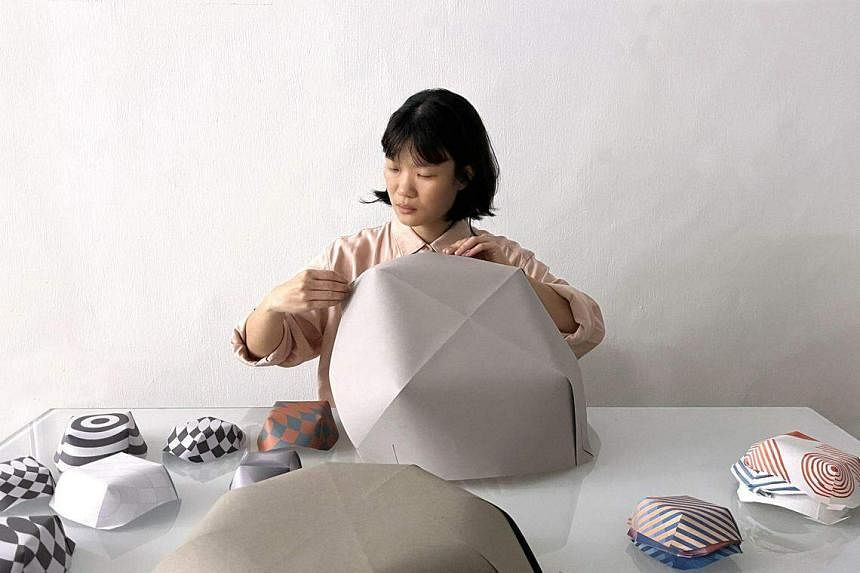
Textile designer Tiffany Loy has collaborated with Italian mosaic experts Friul Mosaic on a material experiment that presents mosaic tiles in skin-like, three-dimensional forms that can function as pieces of furniture.
Called Mosaic Membrane, the project celebrates the fluidity of textile and mosaic materials, while drawing inspiration from the hollow arched structure of the La Rotonda del Pellegrini’s vaulted ceiling in Milan, where Future Impact 2 will be held.
“In collaboration with Friul Mosaic, we’ll be exhibiting a coffee table made from mosaic pieces that are from offcut stones,” says Ms Loy, 37, who graduated from the Royal College of Art in London with a master’s in textiles, specialising in weaving. She also studied textile-weaving in Kyoto.
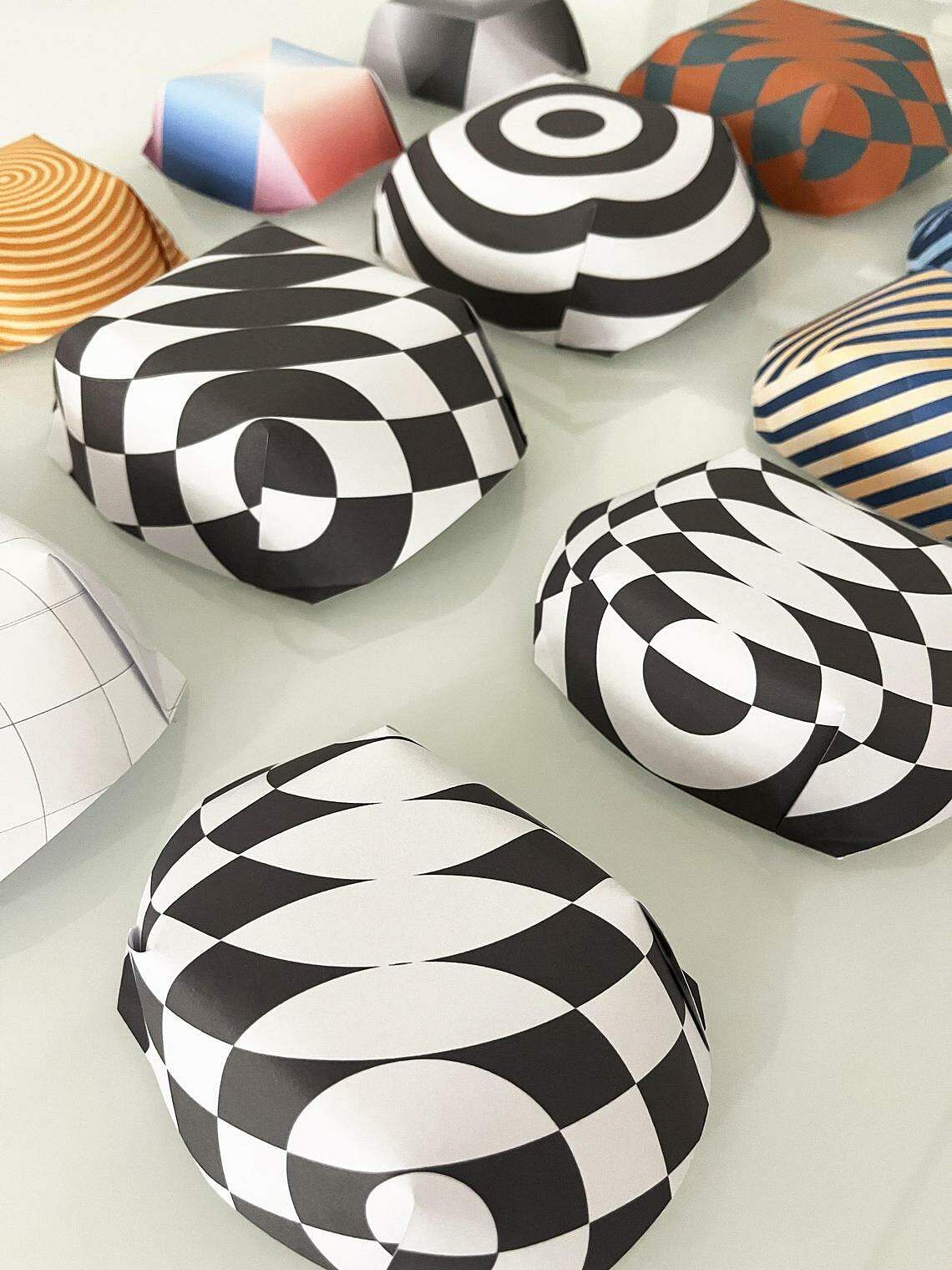
As small pieces of offcut stones, mosaic tiles are an inherently sustainable material choice. Ms Loy takes this further by hollowing the three-dimensional form of the tiles, using as little material as possible.
Since the founding of her eponymous studio in 2014, her experimental works have been exhibited internationally at venues such as the Kyoto Municipal Museum of Art in Japan and La Triennale di Milano in Italy.
Her designs examine the relationships between material, people and culture, hoping to spark dialogue about new technologies for the future.
Ms Loy says the key highlight of Future Impact 2 is the collaboration with Friul Mosaic because much is learnt in the process of exchange with someone from a different field.
“Material exploration and alternative production methods are my main areas of interest and reason for working on this project for Future Impact,” she says. “It was not created to satisfy a market need. Rather, the aim is to discover new methods of working with existing materials.”
Unlikely Fragments by Faezah Shaharuddin
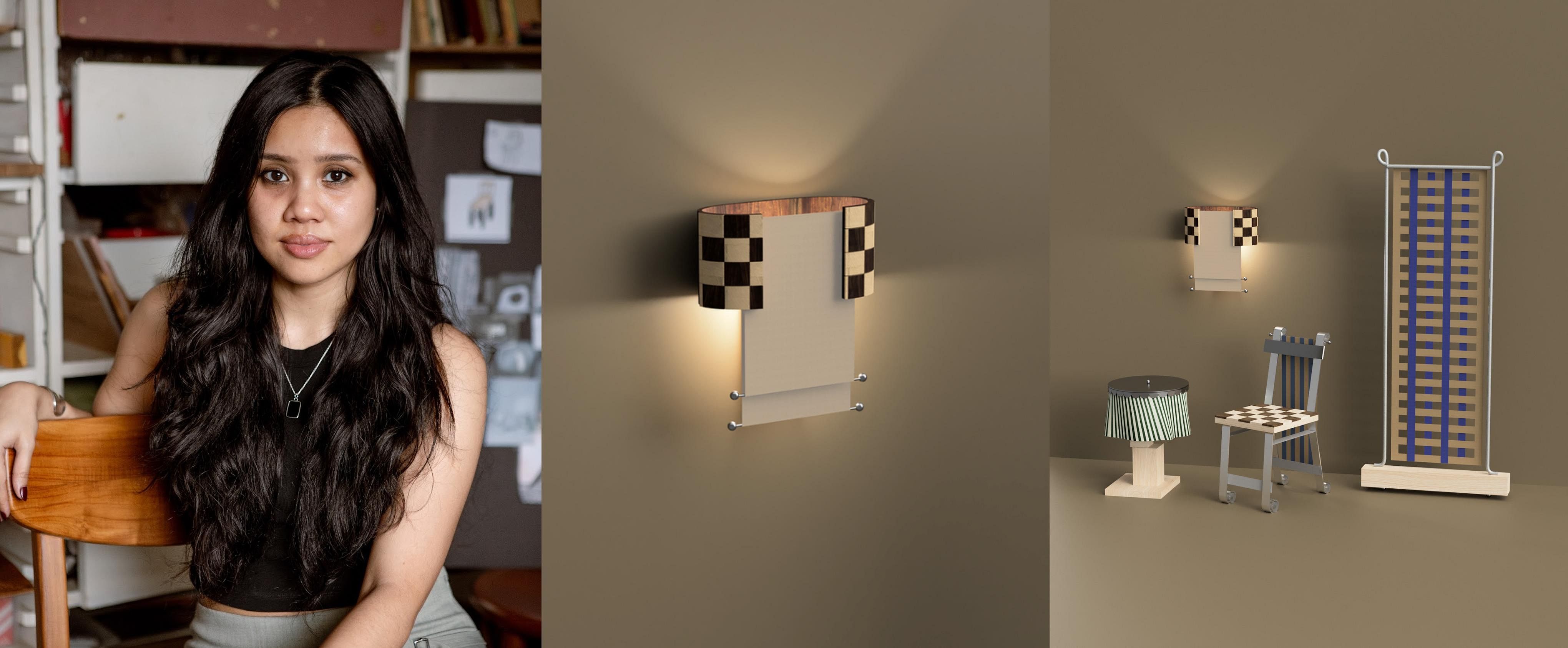
Multidisciplinary designer Faezah Shaharuddin uses waste wood and traditional craft techniques together with a high-tech material technology that is said to help remove carbon dioxide from the air.
Unlikely Fragments is her way of demonstrating how excess materials can be repurposed to function sustainably as well as look beautiful.
“I feel that high-tech sustainable design is pigeonholed into a particular and very corporate aesthetic,” says Ms Faezah, 29, who founded Studio Kallang in 2021. The studio has offices in Singapore and Seattle in the United States, and she splits her time between them.
“I wanted to explore how poetry, humour and craft can also have a place in the tech and sustainability landscape.”
Ms Faezah incorporates wood offcuts from her furniture design projects with textiles treated with CozTerra, a surface coating using breakthrough technology.
The high-tech formulation, which was developed by Singapore-based start-up Xinterra, absorbs carbon dioxide using artificial intelligence (AI) technology.
Xinterra was co-founded by six materials engineers who specialise in making cutting-edge materials for a wide range of applications, such as solar energy and carbon sequestration.
The start-up claims the amount of carbon dioxide removed daily by 20 T-shirts treated with CozTerra equals the amount of carbon dioxide a mature tree removes in a day.
After DSG introduced her to CozTerra, she decided to incorporate textiles into her offcuts. The concept was to combine all these disparate fragments from different sources into a “more beautiful whole”.
She sent some pieces of vintage silk to Xinterra’s laboratory in Singapore for processing while working on the wood and metal components with her network of craft artisans in Indonesia.
Once the fabric was treated, her team assembled the furniture pieces in Singapore before shipping the items – which included lamps and a chair – to Milan.
Ms Faezah says: “New and old, traditional craft and high-tech materials. The idea of unlikely combinations is something we like to explore in our studio.”
Monolith chair and table by David Lee
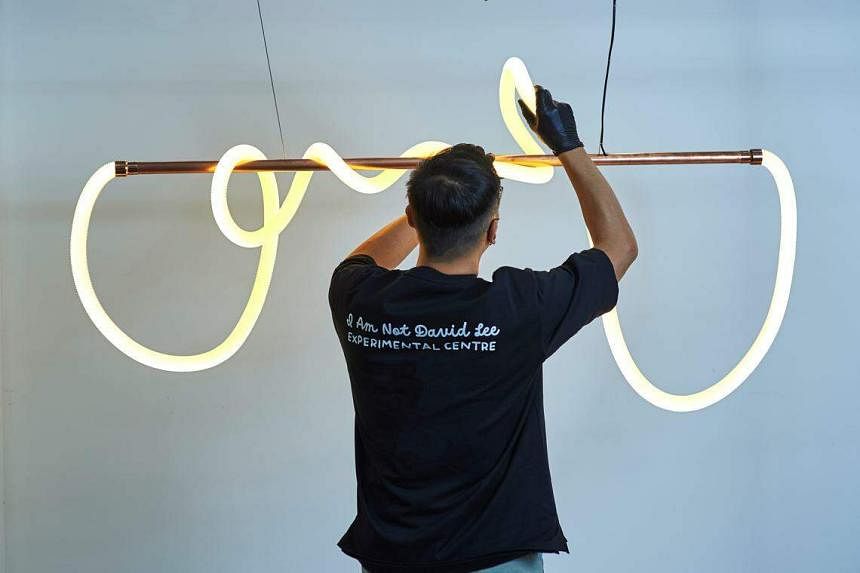
Multidisciplinary artist David Lee says he practises design anonymity, preferring to train the spotlight on his works rather than on himself.
He says this is a form of artistic discipline and a constant reminder that “the essence of creation transcends individual identity”. He infuses this ethos in his works to stress that art emerges not just from an individual, but also from collective input.
The self-taught artist behind I Am Not David Lee art studio, established in 2016, made a bold decision to leave his full-time job in the creative industry to pursue his passion for art.
When the pandemic hit in 2020, he seized the opportunity to delve into experimental design – particularly bricolage, a French term for the construction or creation of designs and objects from a diverse range of readily available materials.
Rather than limiting his experimentation to his established art studio in Woodlands Industrial Park in Singapore, he designated half of his 1,650 sq ft industrial space as an experimental centre.
“This led me to design sculptural furniture, focusing on self-reliance in production,” says Mr Lee, 54, whose designs include pop art, minimalist furniture and home decor accents.
His Monolith chair and table are fashioned from a single piece of material that is laser-cut and bent into shape.
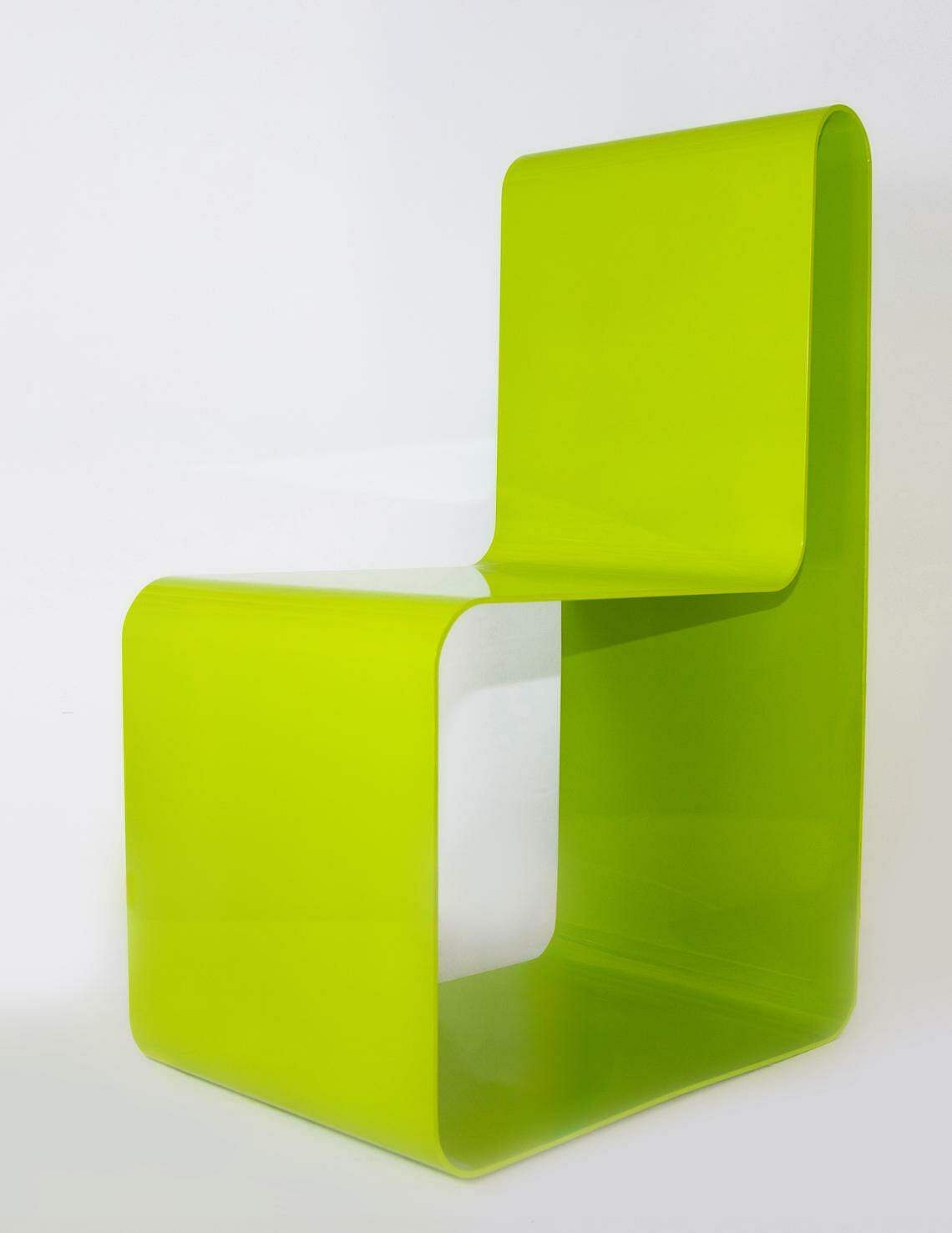
They challenge the trend of complex design, he says. Typically, to make a chair, at least 12 different components need to be crafted from three main materials: wood, steel and leather.
“Despite its outward appearance of simplicity, the end-products of furniture today demand significant investments of time, labour and resources,” says Mr Lee.
With sustainability in mind, he sought out aluminium, as it can be reused repeatedly without compromising quality. He selected 5056 Aluminum Alloy, a malleable type of aluminium, for the Monolith chair and table.
The objects are crafted from a single piece of aluminium through laser-cutting and bending into shape.
“Through this project, the aim is to minimise waste, conserve human resources and reduce the environmental impact,” says Mr Lee.
Para Stool by Christian Hammer Juhl and Jade Chan
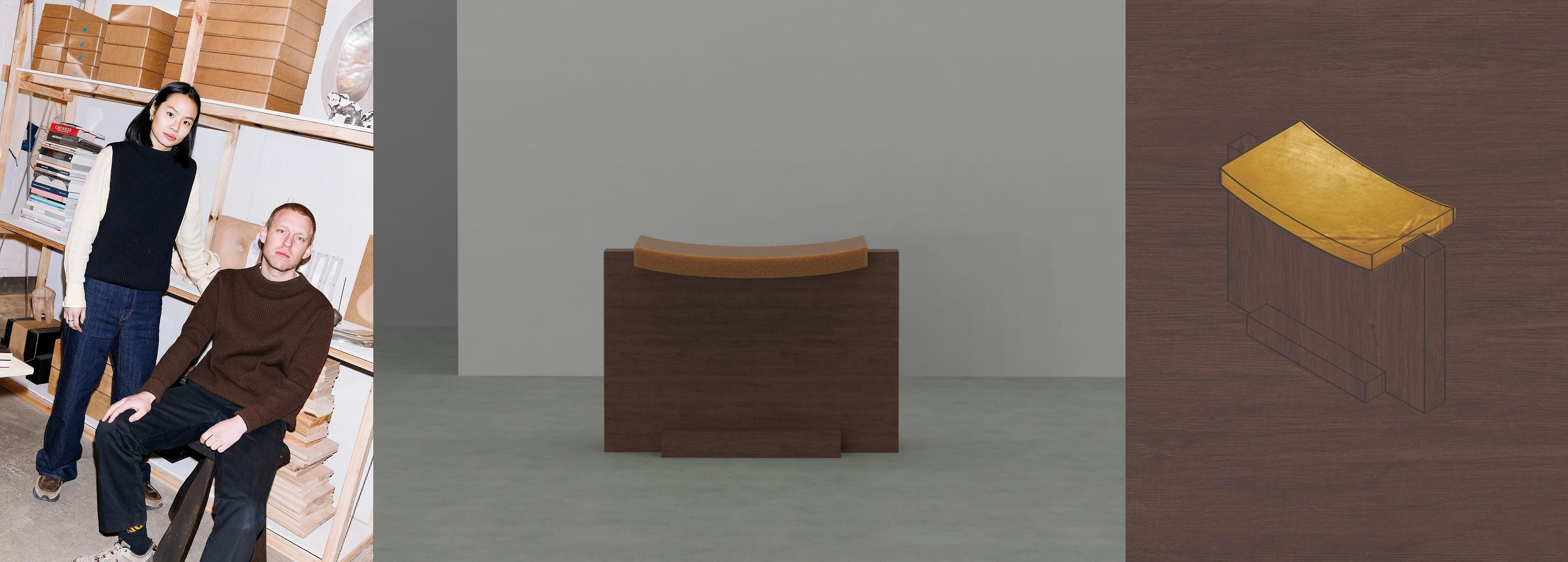
Design duo Christian Hammer Juhl and Jade Chan of Christian+Jade have come up with a stool made from old rubber trees destined for the incinerator after their 30-year lifespan.
The Para Stool is crafted from the Para rubber tree, also called the Pokok Getah Para, which is found in Singapore and the region. They have repurposed the rubber wood together with the natural rubber sap to highlight the beauty and quality of the tree and its latex product.
The Para Stool is produced with support from Japanese furniture manufacturer Karimoku, which sources underutilised rubber wood from Malaysia.
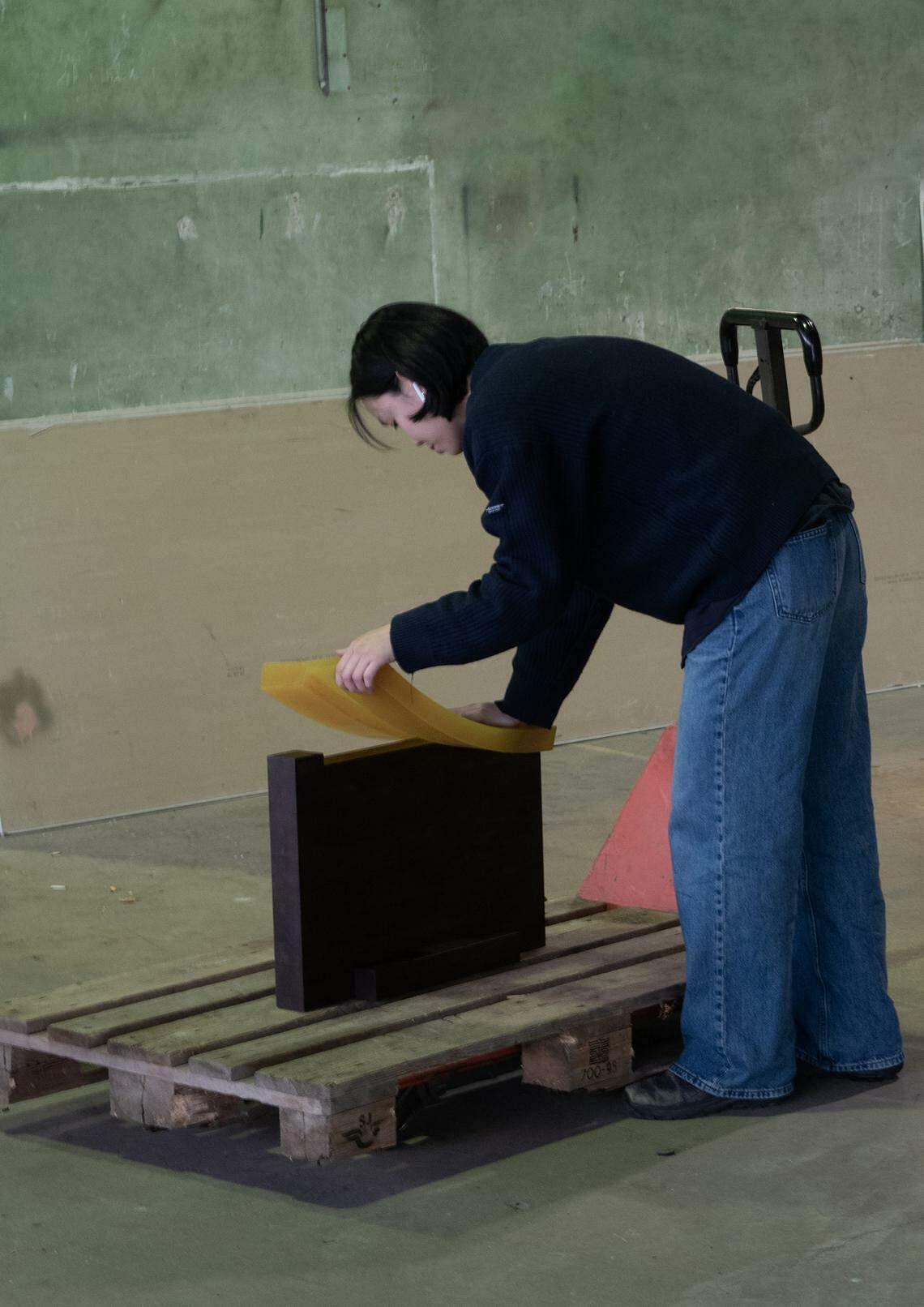
The Copenhagen-based practice was founded in 2020, centred on the desire to create works that challenge and deepen the relationship that people have with objects and spaces, as a way of shifting attitudes towards how humans live and consume.
The duo met in 2013 while studying at the Design Academy Eindhoven in the Netherlands.
The Para rubber tree, native to the Amazon region, was first introduced to Singapore in 1876 by the director of the Singapore Botanic Gardens H.N. Ridley.
The research into rubber led to the transformation of the entire South-east Asian landscape when the tree played a pivotal role in the rubber boom of the 1900s.
Ms Chan, 30, says it was important to work with a resource that played a large role in shaping the material history and landscape of South-east Asia.
The curved form of the stool takes its inspiration from the slicing of the rubber tree during the harvesting process. The project attempts to bridge the gap between preconceptions of the material and its origin as a living tree.
Mr Juhl, 33, says more people need to start seeing the materials and objects in the everyday environment as natural resources harvested from the earth.
“When we recognise the many hands and processes that materials have passed through to get to where we are, we can then begin to change the way we choose to live and consume into one with greater responsibility,” he says.
Reciproco by Genevieve Ang and Clement Zheng
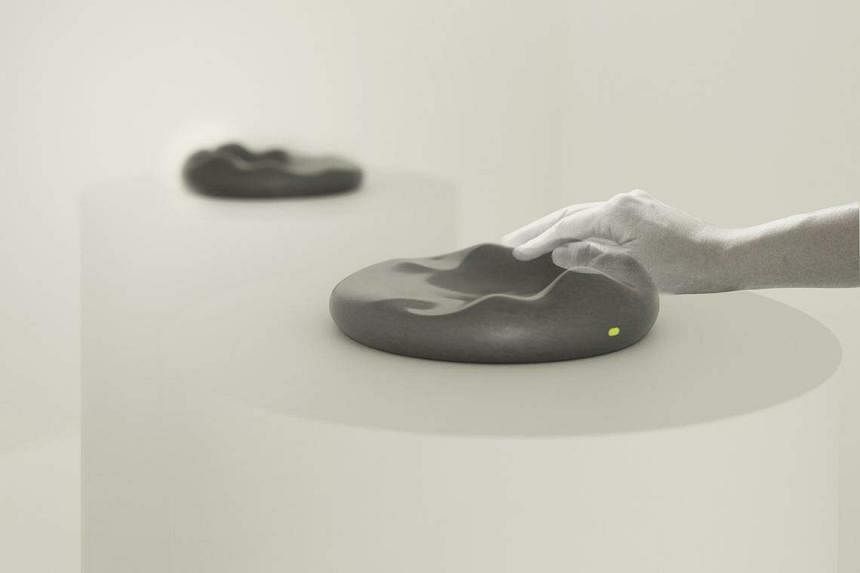
Independent designer and artist Genevieve Ang and assistant professor Clement Zheng from the Interactive Materials Lab are collaborating on Reciproco, a pair of interactive ceramics designed to spread warmth and conviviality.
The design sets out to push the limits of digital communications by imagining a new way to connect and sense another person remotely.
The ceramic pieces are coated in glaze formulated with glass waste and enhanced with thermochromic paint that changes colour when the surface is activated. It is heated with circuits embedded into the ceramic body that are triggered when touched.
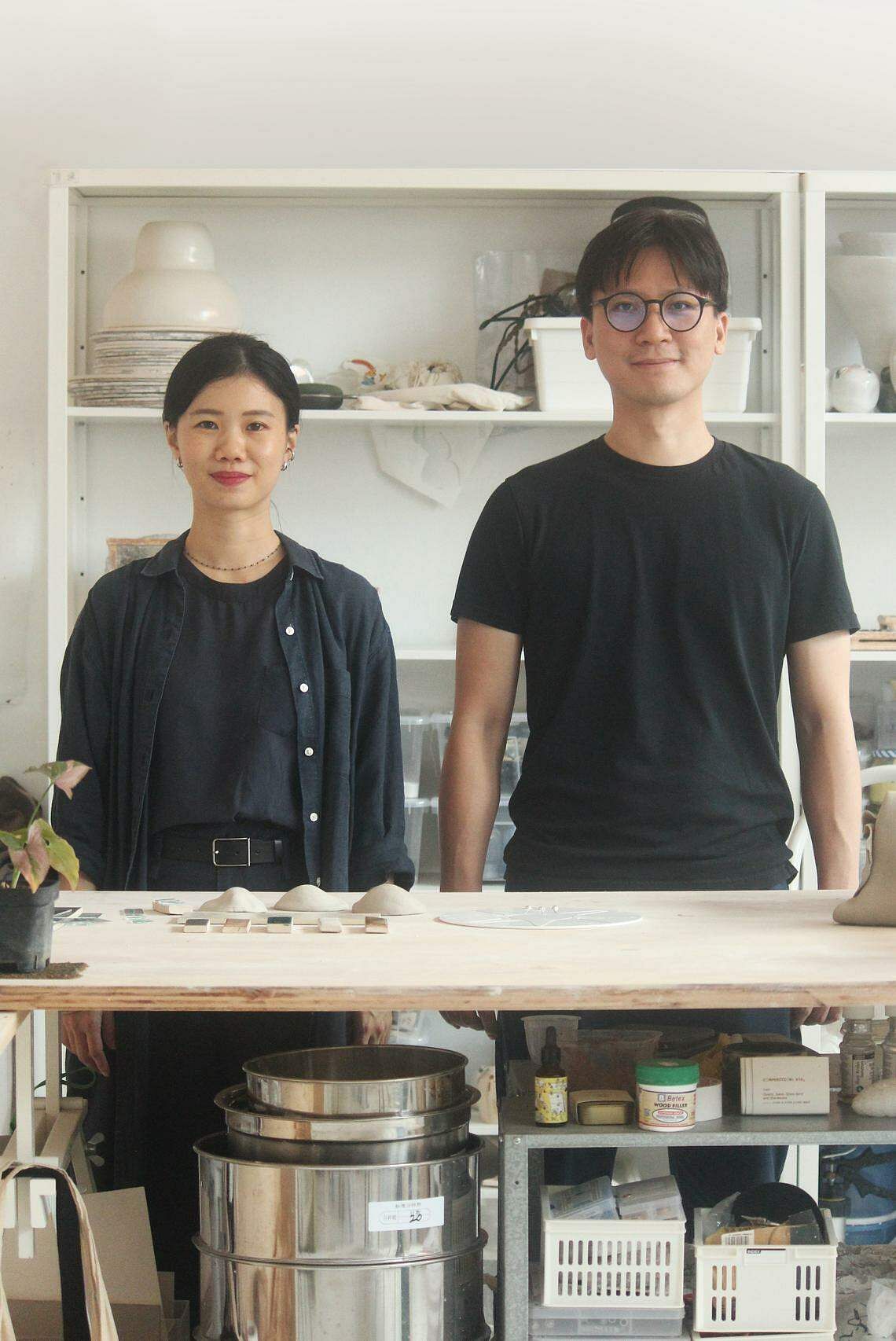
“We are surrounded by digital communication platforms today, and this is a paradigm that was reinforced only during the pandemic,” says Ms Ang, 32.
“For Reciproco, we sought to create a platform that can support social communication, but through the less common modality of transmitting touch and heat. And through such a platform, we hope to offer a means of communicating with others in a calmer way.”
The idea for Reciproco came to Ms Ang as she felt the comforting warmth from a ceramic mug she was holding while reading papers from the Interactive Materials Lab, a research outfit in the National University of Singapore’s Division of Industrial Design.
Prof Zheng, 37, says the duo’s strengths were a perfect fit for the project.
“Genevieve’s work on handcrafting ceramic forms for the home and using glass waste as a new material for glazes melded well with the lab’s work on incorporating electronic circuits directly into ceramic objects,” he says.
Manifold Steel – Wall Piece No. 1 by Zavier Wong
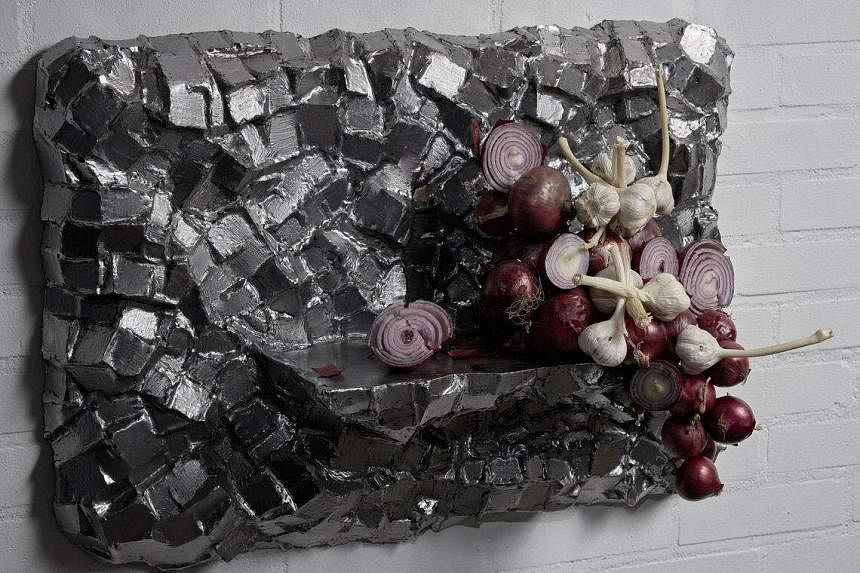
Designer Zavier Wong’s Manifold Steel – Wall Piece No. 1 is a shelf formed from thin sheets of metal that are cut, folded, welded and finished by hand with the support of algorithmic and generative design tools.
It looks less like a utilitarian shelf and more like a piece of wall art that demands quiet contemplation.
And that is the reaction the Singaporean wants to elicit from his audience.
In his design practice, he tinkers with a range of media and materials, gravitating towards materials that are imperfect or rejected by industry. He uses the perceived uselessness as an invitation to transform discarded materials.
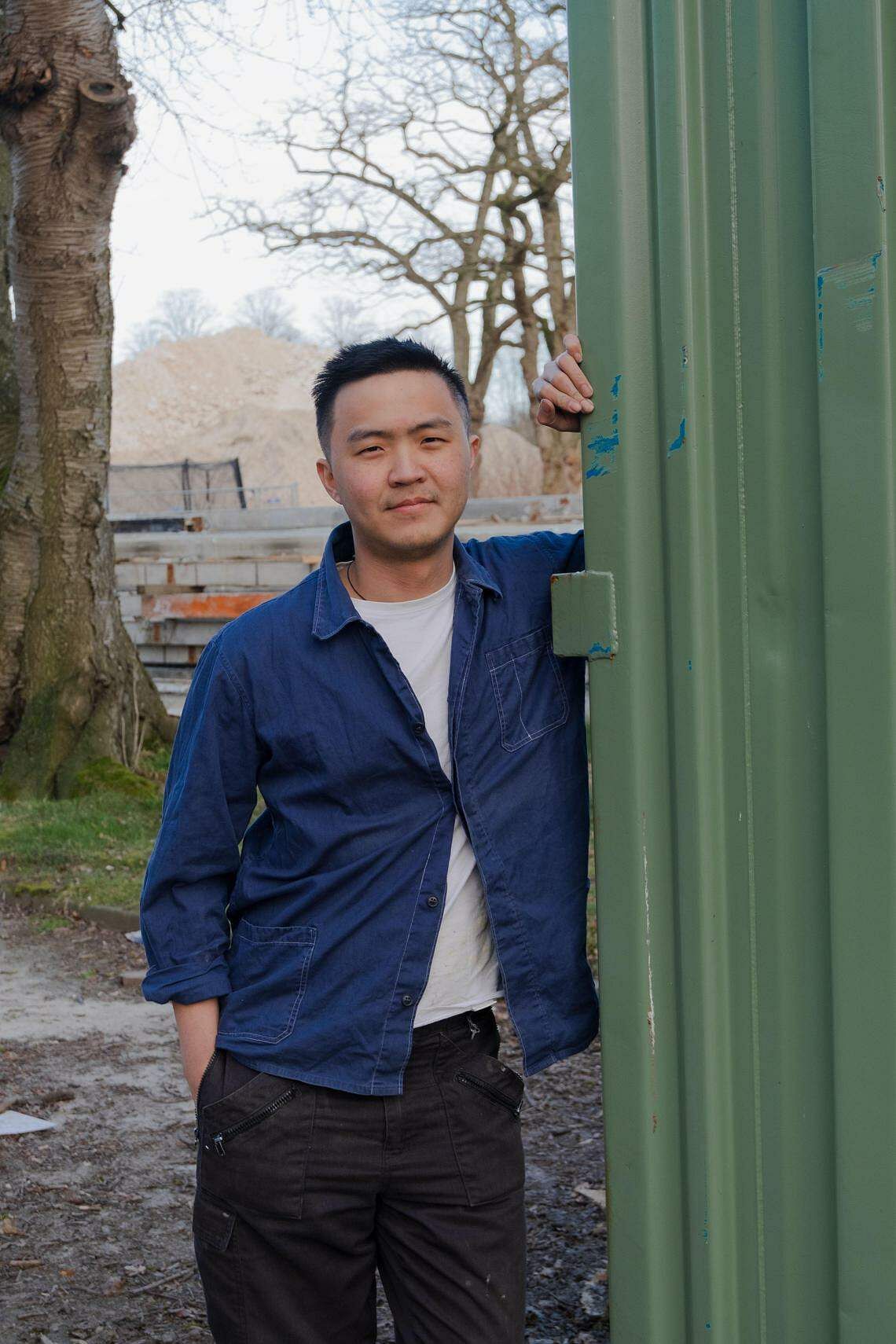
“The inspiration for Wall Piece started from my reflections on social media,” says the 30-year-old, who founded his eponymous studio in 2021 in Eindhoven in the Netherlands, where he is currently based.
This was shortly after he graduated from the Design Academy Eindhoven, a university for art, architecture and design.
“Social media tends to reduce and oversimplify things. And I felt sheet metal steel also has that reductive quality. I wanted to use the sheet metal as a metaphor for social media and transform it. To humanise the material. Using its thinness, I use what is a perceived weakness in relation to the concept and I flip it.”
The result is that the end product, the reflective quality of the sheet steel, mirrors the viewer symbolically. Mr Wong says that while social media oversimplifies human existence, the act of making Wall Piece seeks to subvert it and turn it into an object that mirrors the viewer.
“In a way, what is reflected in the metallic finishing is that humans are beings with layered and complex stories, not the one-dimensional figures that social media tries to reduce us to.”
